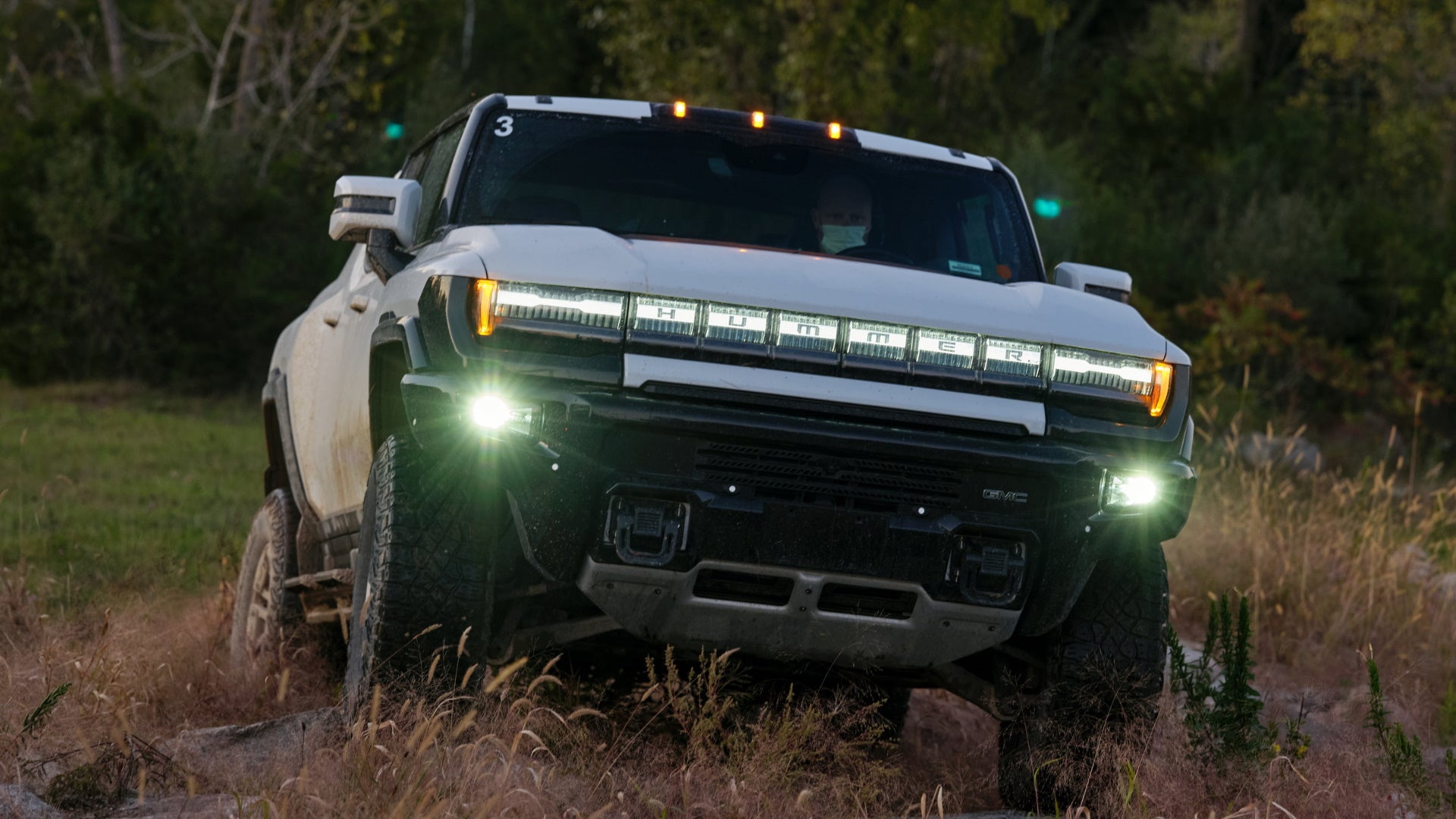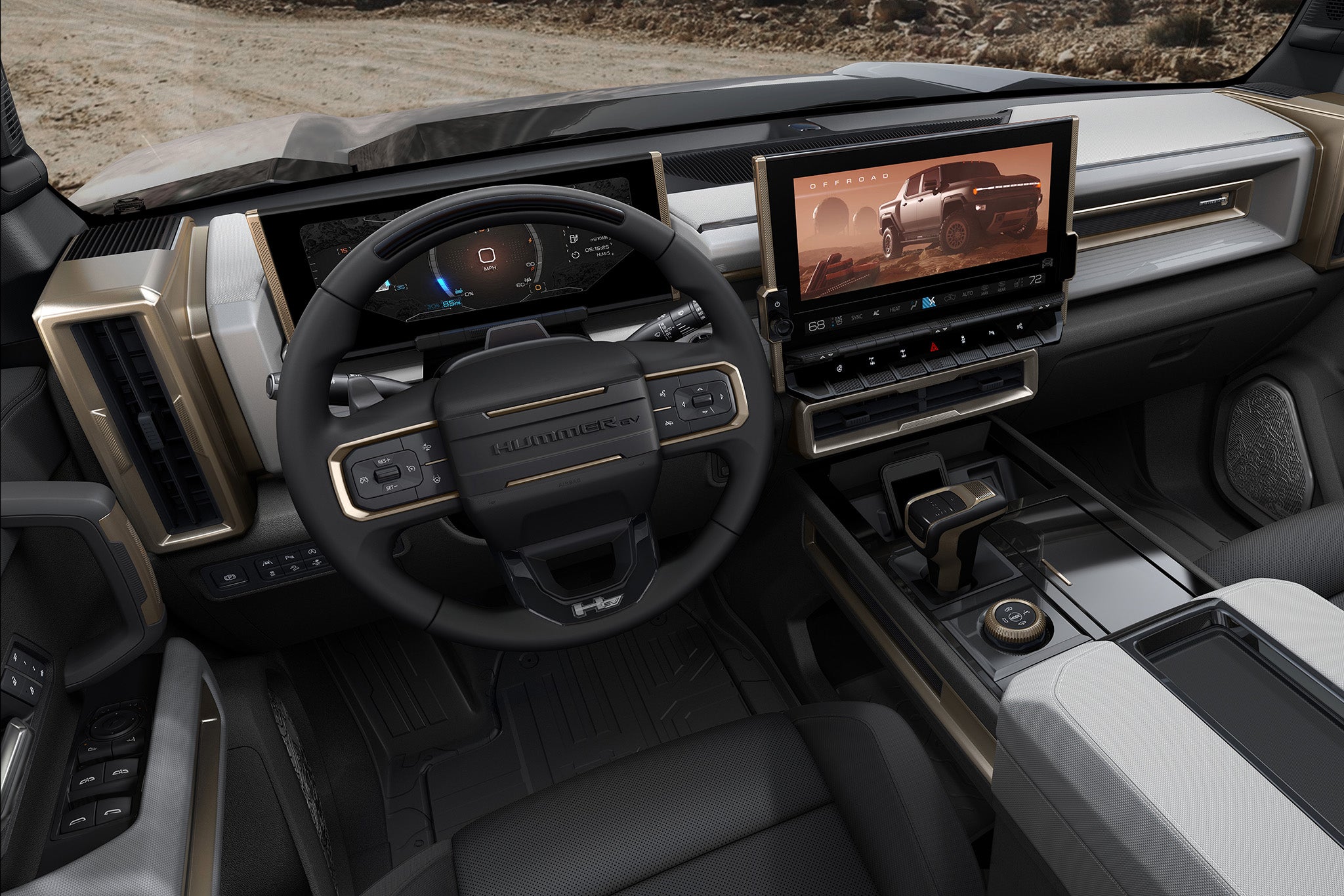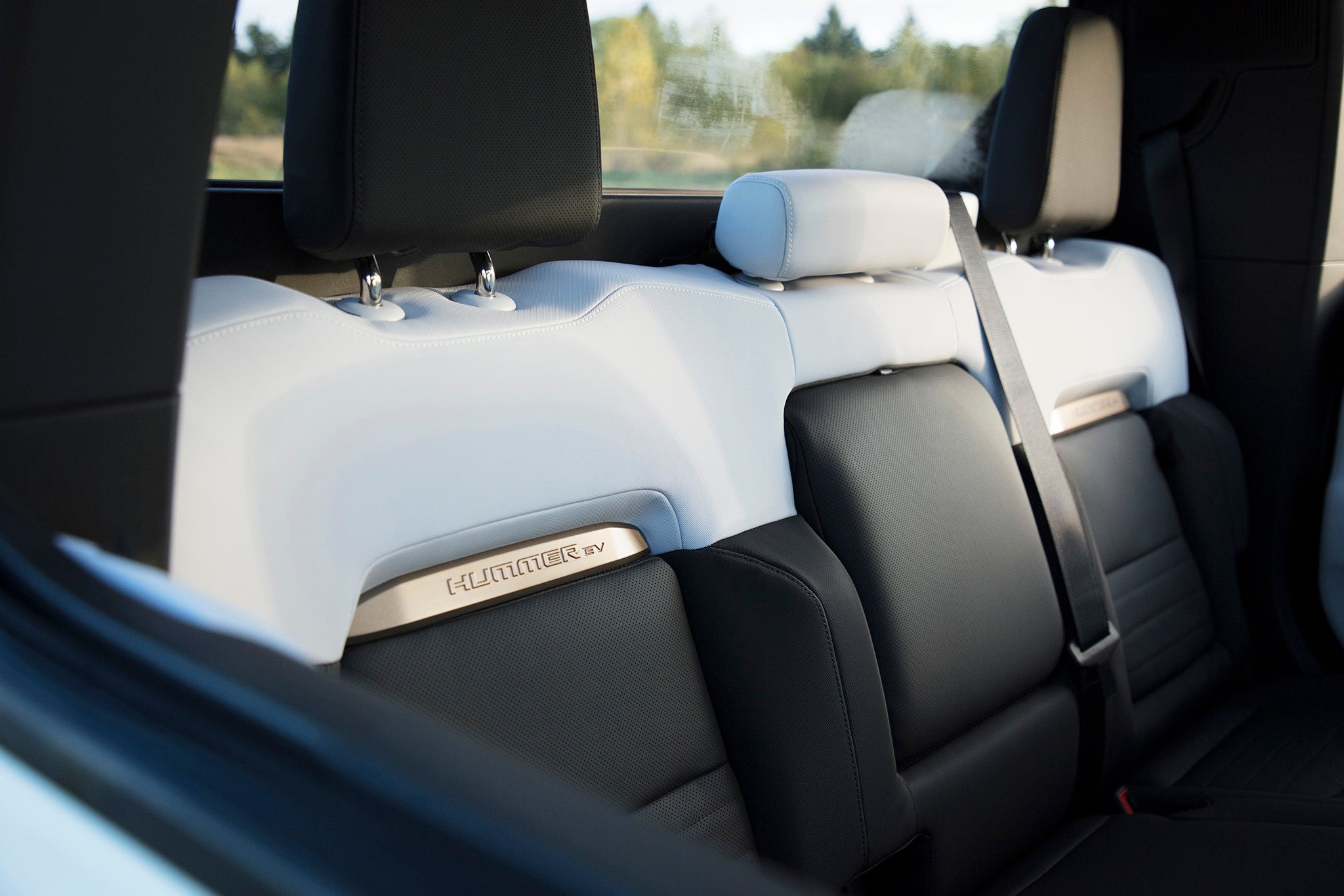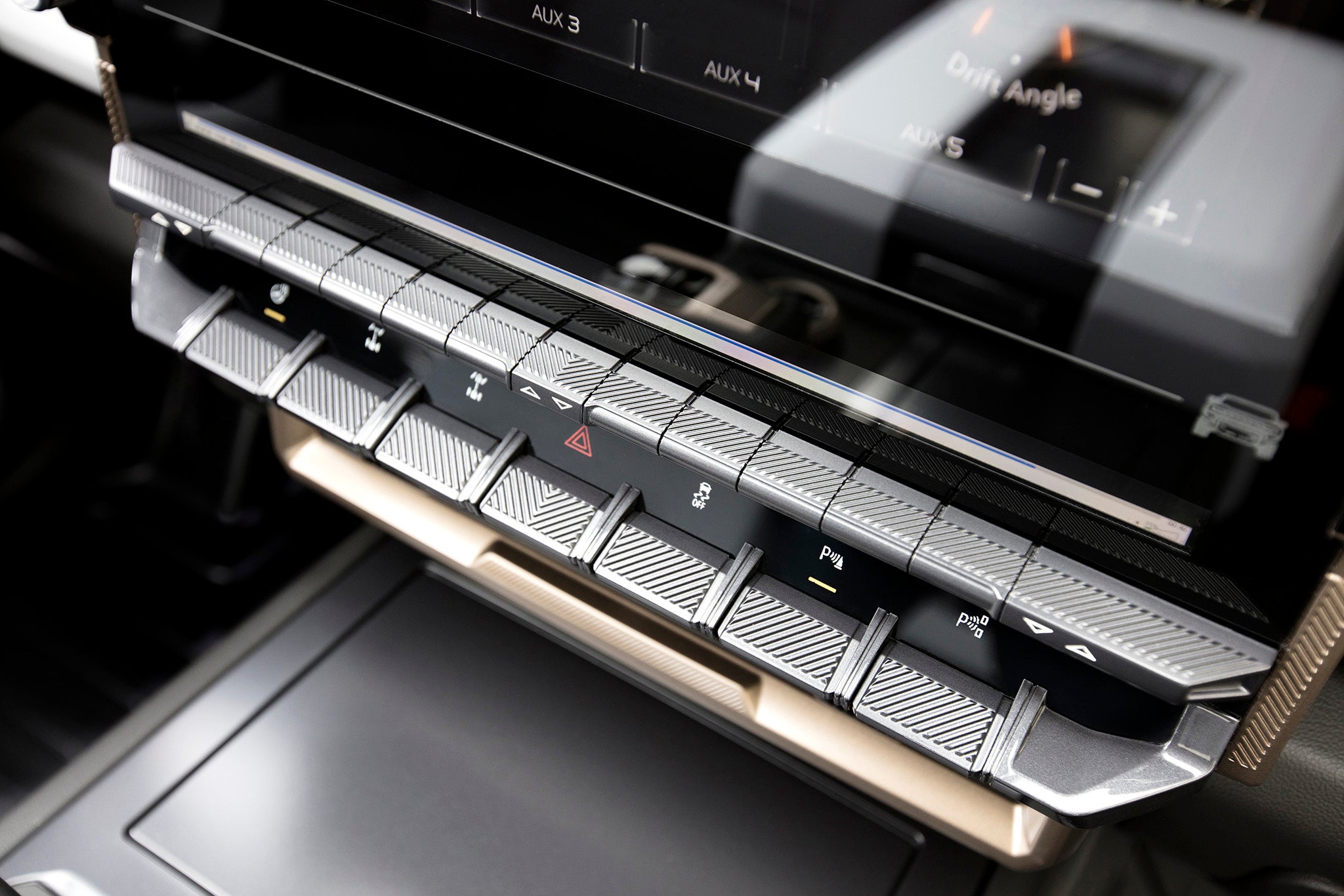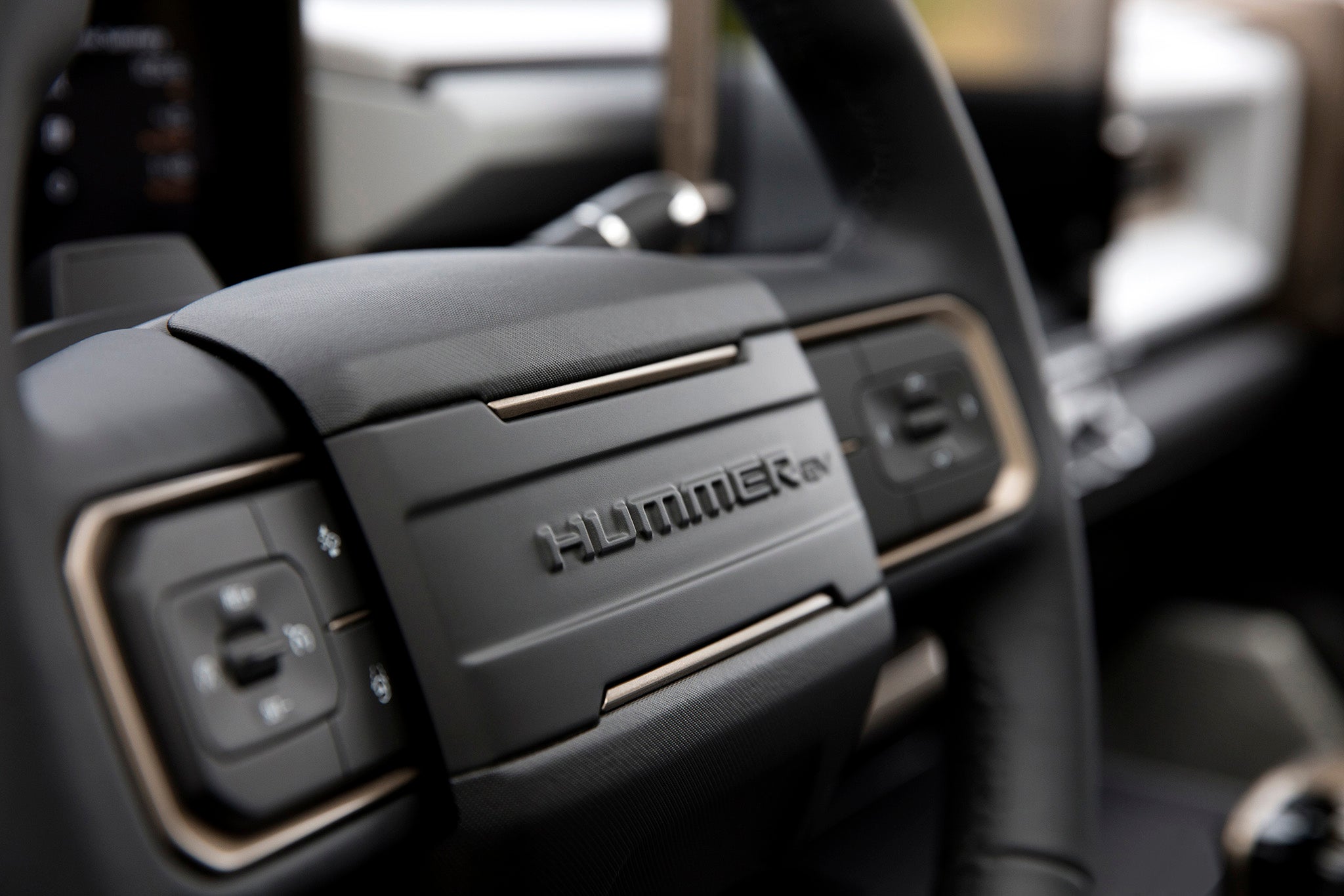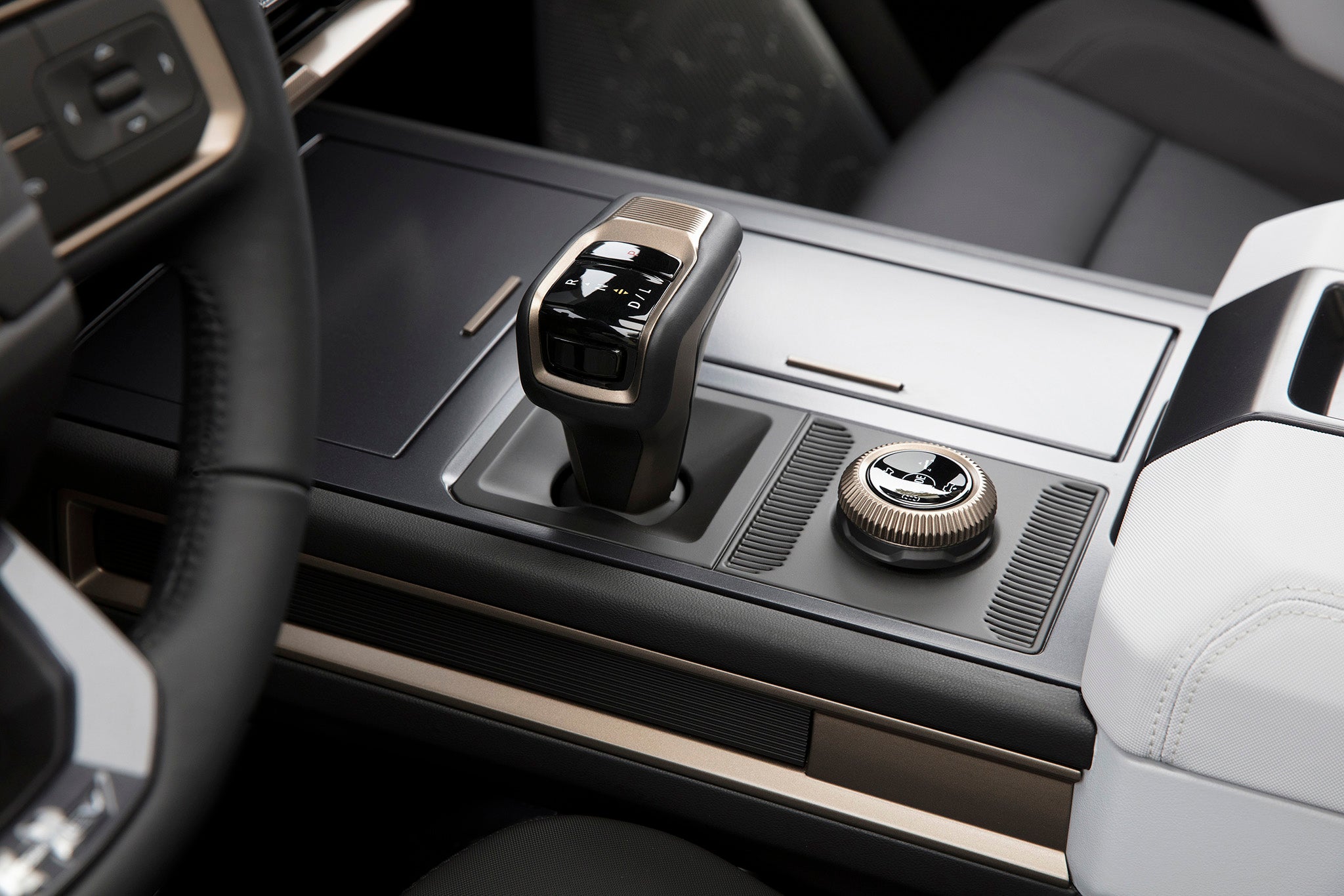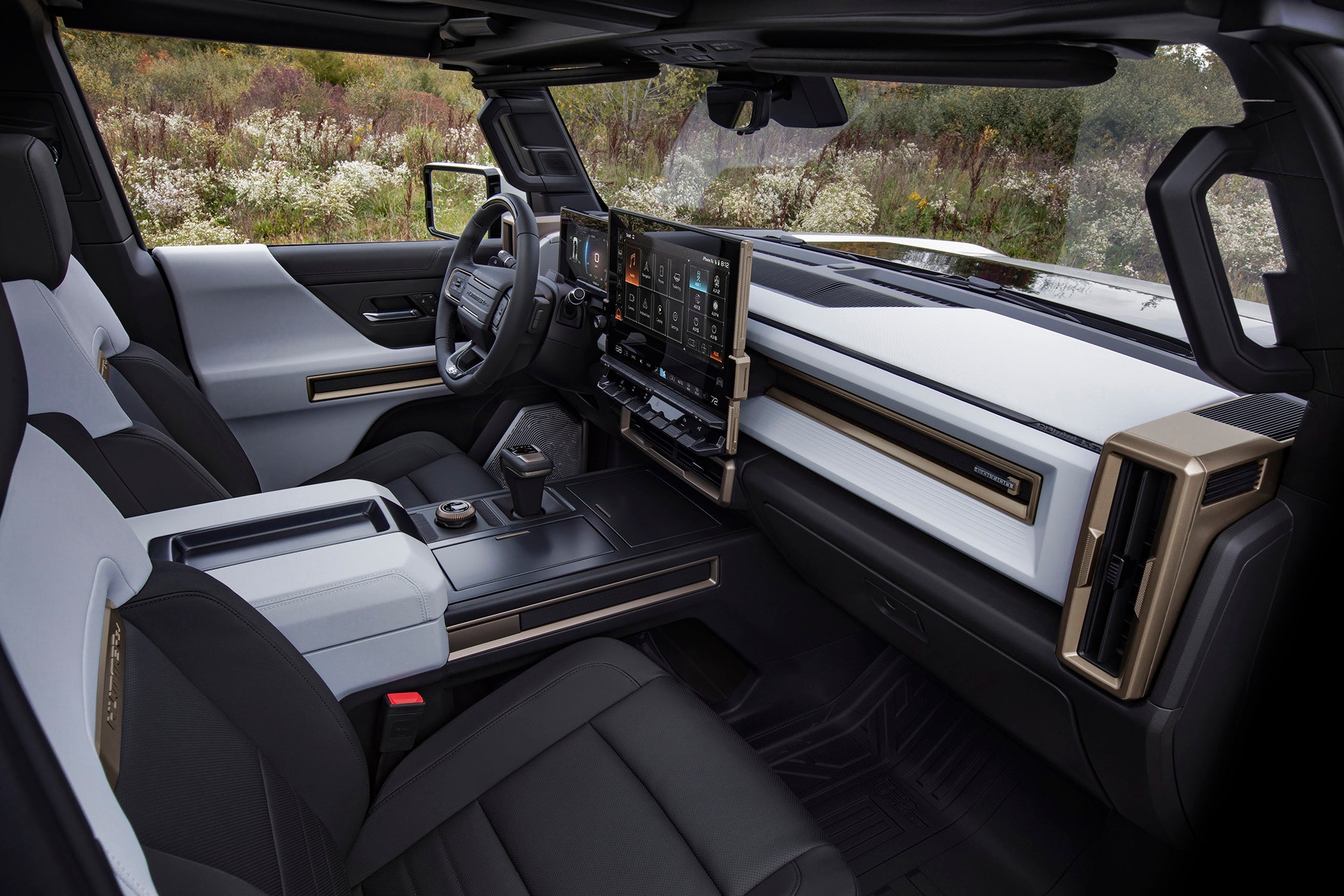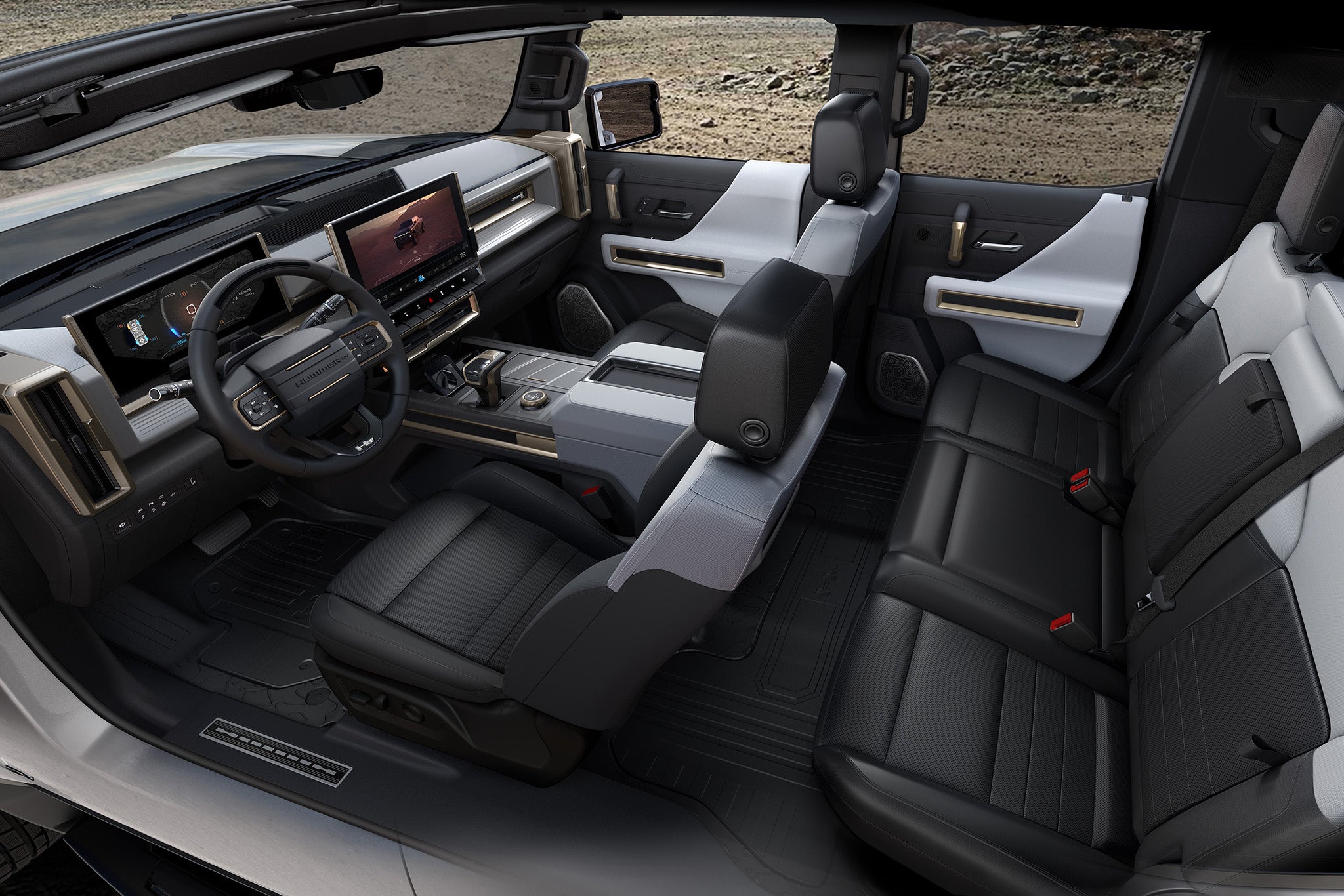The Hummer name returned to GM’s lineup officially when it was revealed to the world several months ago as an electric pickup truck to the tune of "Immigrant Song" by Led Zeppelin. In its reveal video, it triggered an earthquake, tore open a big crack in the earth, and broke the sound barrier. The 2022 GMC Hummer EV isn’t actually capable of doing any of those things, of course, but when General Motors invited me to the company’s Milford Proving Grounds in Michigan to be one of the first to drive a prototype version of the truck, I accepted in a hurry. It was time to see if it lived up to all the hype.
Because there is a ton of hype. I'm sure you’ve probably seen all the Hummer EV's impressive specs online: 1,000 horsepower, more torque than God, and the ability to drive diagonally, to name a few. But as soon as I climbed into this new beast all those things—all of these separate features—added up in ways I didn’t expect. Because it's an EV, it's just different than any other big truck that I've been in before. It has a flat floor which makes it feel awfully roomy, and its four-panel glass roof makes the whole interior feel airy, like a greenhouse.
Those were just my initial impressions when I stepped in, too. Everything changed as soon as I started to snoop around that massive center screen and put this thing through its paces. This preliminary drive represents what I experienced during one afternoon spent behind the wheel of the Hummer EV—but keep in mind that what I drove was still a prototype, so things may differ between this and the production version. It's also why this first drive review is missing the usual spec box—GMC didn't provide me with any production specs.
Gizmos and Specs
The array of gizmos that are embedded in this truck—and by extension, its 13.4-inch center display—are pretty top-notch. There is everything from suspension settings to steering configurations to traction modes, and that’s not to mention comfort features like the heated and cooled seats. It's all in there, but there's also a slew of physical switchgear that makes it all very accessible and easily selectable. For the record, all of these toys were equipped as standard on the trucks we drove, which were First Edition trim levels. This is the highest trim and the most expensive, starting at $112,595 before destination.
What makes the Hummer EV impressive doesn't necessarily stem just from all the gadgets that are crammed into it, either. GMC wouldn't confirm this detail, but this thing is very likely just over 9,000 pounds. It also has 35-inch tires and air suspension that provides a maximum of 15.9 inches of ground clearance. It rode like an aircraft carrier. Actually, scratch that—it rode like a continental plate.
What’s even more impressive is that didn't maneuver at all like those things. As the GMC engineers were so eager to tell me, its turning circle is just as tight as a Chevy Bolt's thanks to its four-wheel steering. In fact, it was clear that the engineering team was not only concerned with removing the stigma of a Hummer being a massive gas-guzzling SUV, they also wanted to address its size. It’s a super truck with a Hummer badge on the front, sure, but it doesn’t drive like a road-legal locomotive.
Big Truck, Big Moves
This thing has more cameras than you would think possible to put on a car—18 in total. They're absolutely everywhere, surveilling vital parts of the truck like the underbody, the wheels, the rear, the sides, everything. But they were necessary because, between the ride, maneuverability, and technology, they made the truck very approachable despite being so large. And being an EV meant the agility at speed was a little frightening at first.
The massive battery, which is in the neighborhood of 200 kWh, is basically a huge acid-filled mattress sitting under your feet. The resulting center of gravity is very low. This is a feature that the owners of performance EVs such as the Tesla Model 3 and Model S like to brag about, but in reality, it's most noticeable in a huge truck like this. The Hummer EV was perfectly willing to swerve around on dirt roads at highway speeds with absolutely no problem. The tires and suspension were more than up to the task, and the car was constantly moving torque around to make sure we got optimal grip on a loose surface.
That's also not even mentioning how it handles asphalt.
Launching in “Watts to Freedom” mode is incredible, but more impressive when you think about how heavy the Hummer is. For those who don't know, Watts to Freedom—abbreviated WTF—is the mode you must select if you want to unleash the Hummer’s maximum power and quickest acceleration. It sinks down to its lowest ride height, spends a moment conditioning its battery, and then this (allegedly) 9,000-pound truck gets wheelspin from all four of its 35-inch tires before roaring past 60 mph in three seconds dead.
Braking is also no problem at all. The Hummer has aggressive regenerative brakes when one-pedal driving is enabled, and if that’s not enough, there’s a Chevy Bolt-style regen paddle behind the left side of the steering wheel which activates extra resistance. All of this is, of course, available before you actually touch the brake pedal itself.
Unusual features like “Crab Walk” worked more naturally than you might think, too. Crab walk is one of a few rear-steer settings I could enable, and it made the rear tires turn in the same direction as the fronts. This meant I could drive down the road diagonally, which sounds pretty unnatural but was actually easy to get used to. The front and rear wheels turned the same amount until the back end reached its maximum angle of 10 degrees. At that point, there was no steering lock or anything, the front wheels just continued turning. The effect was a hybrid of diagonal driving and regular steering, which meant I could slither down the road like a snake. I could point the truck's nose around with minimal effort, and I always maintained the ability to return to driving straight down the road at any time by simply centering the wheel.
There were also a few good features on the truck that came right out of GM’s ever-growing parts bin. Super Cruise was fitted to my test vehicle although I didn’t have the opportunity to try it, and GM’s rear-view camera mirror was also present, looking a little out of place in the Hummer’s otherwise squared off, industrial interior. The version of Super Cruise fitted to this truck is also the very latest one, which is allegedly capable of changing lanes by itself without having to be prompted by a flick of the blinker stalk. Since this is a super truck, both of these features will also be present on even the lowest trim "EV2" Hummer EV, which will arrive in spring 2024 at a cost of $79,995. Higher trims will cost a bit more and arrive a bit sooner, with EV2x trucks (a step above EV2) costing $89,995 and EV3x vehicles (just below the top-dog First Editions) coming in at $99,995. Both of these prices are before destination, with the former arriving by spring 2023 and the latter hitting showrooms in fall 2022.
Are there any glaring issues with this truck? Well, no, but my test vehicle wasn’t without small flaws. Remember how we reported GM is going to use active noise cancellation in this truck? Well, it needs it. At highway speeds, it’s a little loud inside, likely thanks to the truck’s upright stature and its massive mud-terrain tires. That may just be the prototype vehicle lacking sound deadening, but it seemed very close to completion to me, so I doubt that was the case. I'll be interested to drive a production version of the vehicle when they eventually roll off the assembly line to see how well that active noise cancellation actually works.
Appropriate for Today
It's still early on and I only drove a prototype model but electrifying the Hummer is doubtlessly the best and most foolproof way to resurrect it for today. It's well thought-out, especially in contrast with its brutish looks.
GM played up its strengths by loading it with a trainload of off-road features in line with the brand's image, but it also addressed its weaknesses with much of the same technology. The air suspension allows for massive ground clearance but it also adjusts the vehicle down to an ideal height on the highway to improve its range, as well as make entry and exit easier. The four-wheel steering means better off-road capability but at the same time incredible maneuverability in tight parking lots and city streets. Its three-motor electric drive system also provides torque vectoring that's more effective than ever off the beaten track and offers incredible performance on a paved road as well.
When GM brought back the Hummer name, it had to do one hell of a job justifying the decision. It's not like the original Hummer had a reputation for being environmentally friendly. But the General figured it out, and more. If the production version, projected to be initially available this fall, is at all close to the prototype—and I suspect it will be—then Hummer fans and off-road aficionados are in for a real treat. Let's hope the chip shortage doesn't keep these monsters off the streets.
Got a tip or question for the author? You can reach them here: [email protected]
